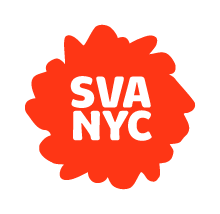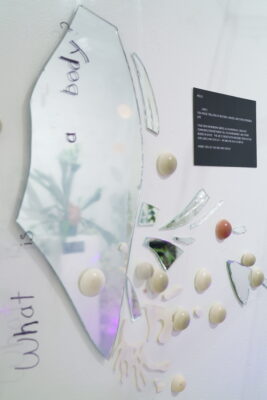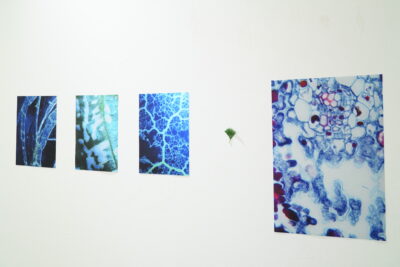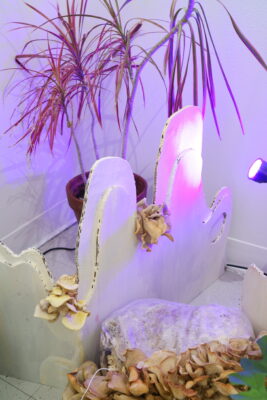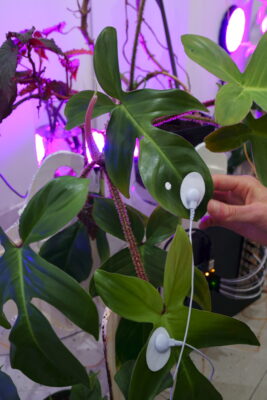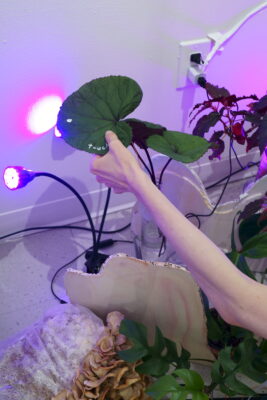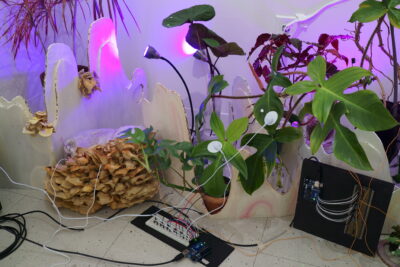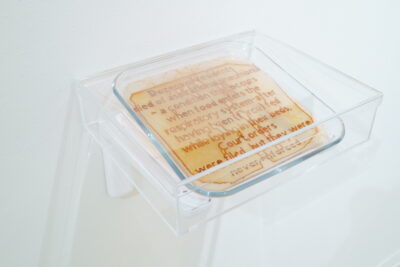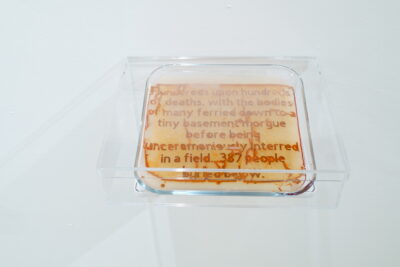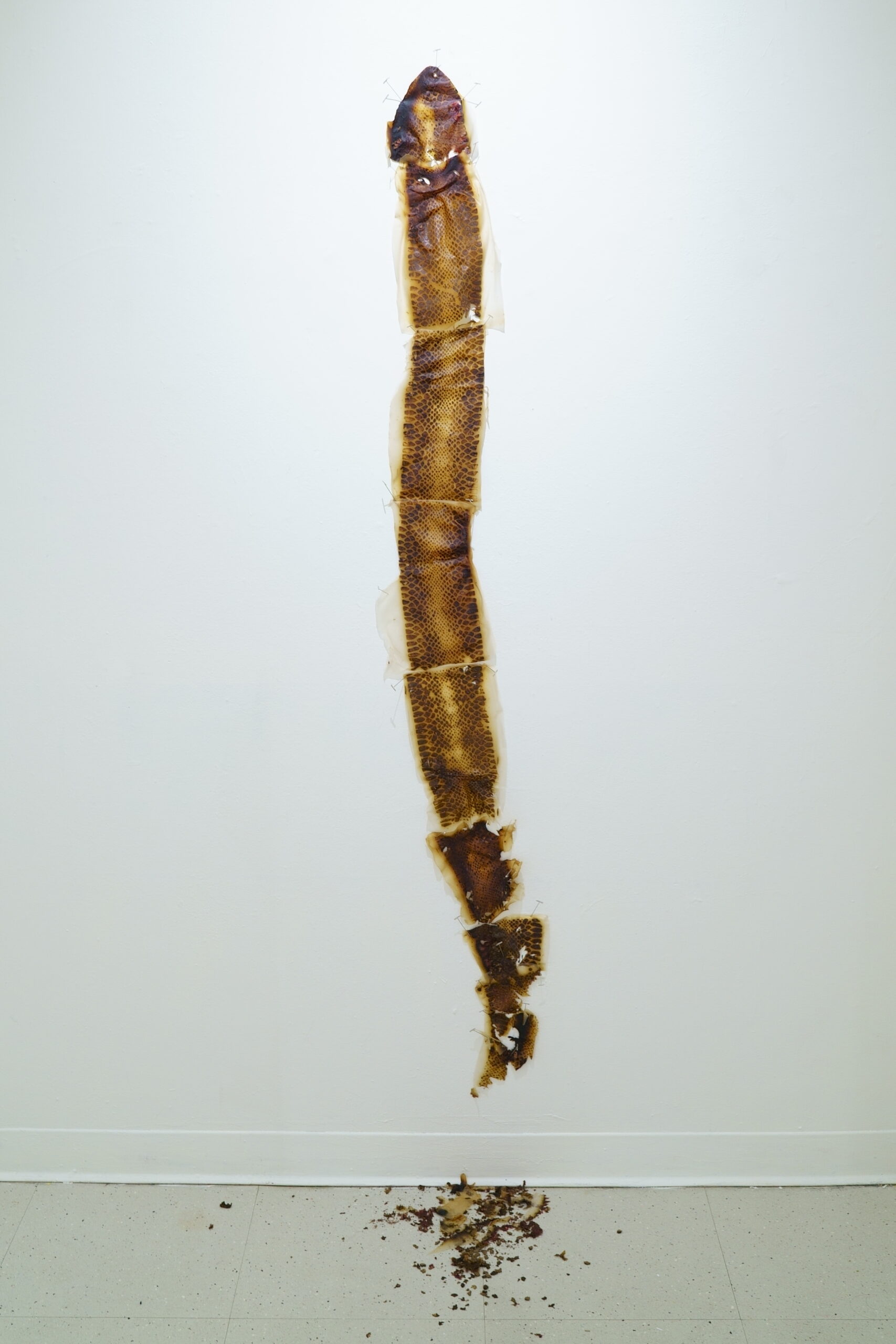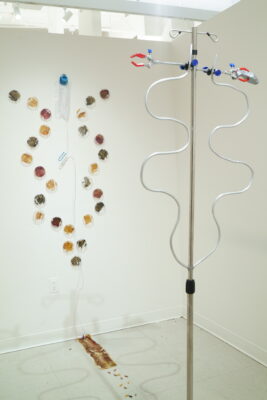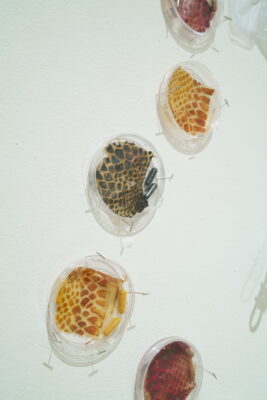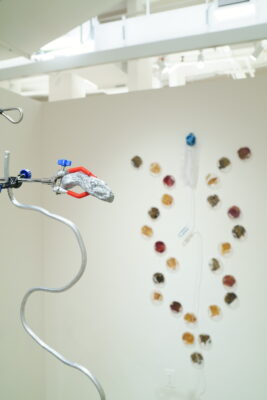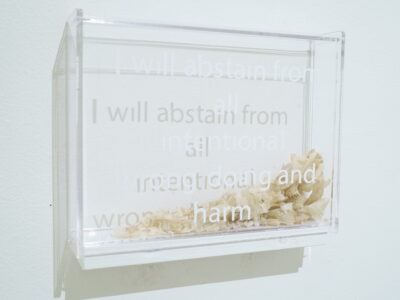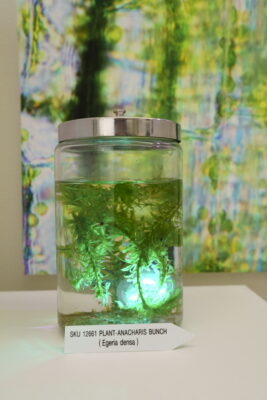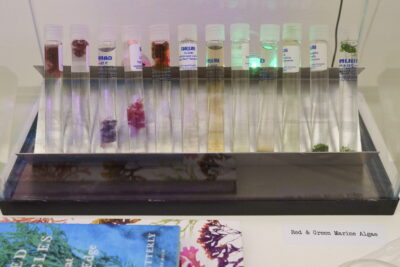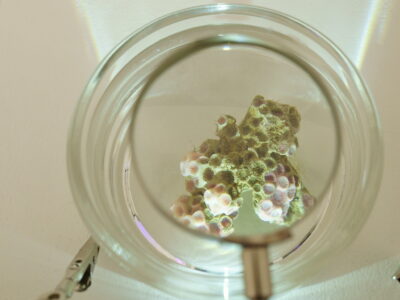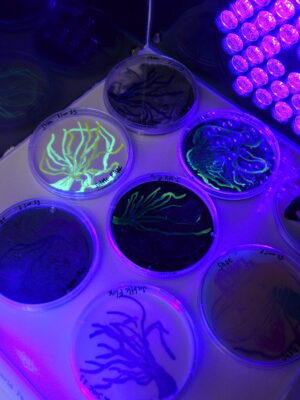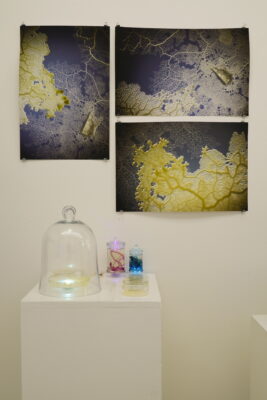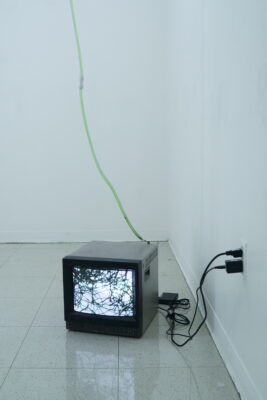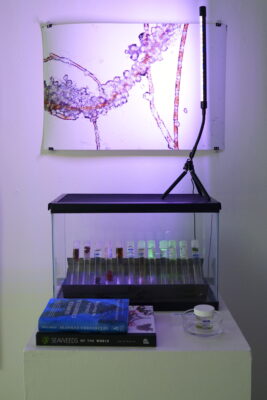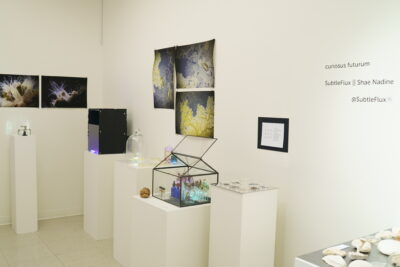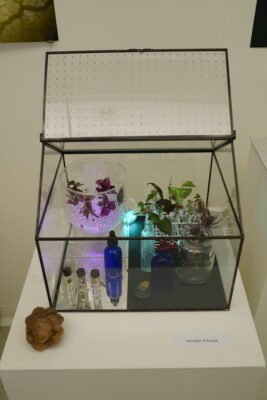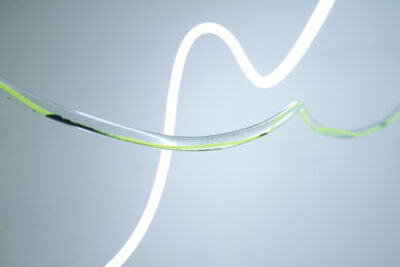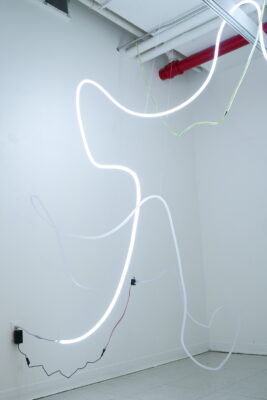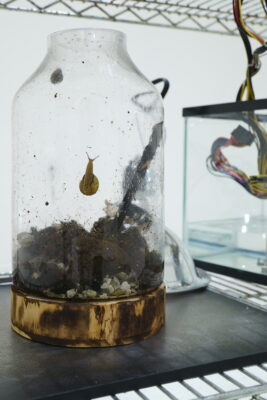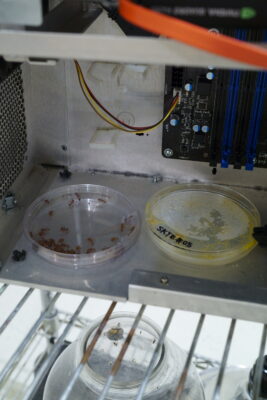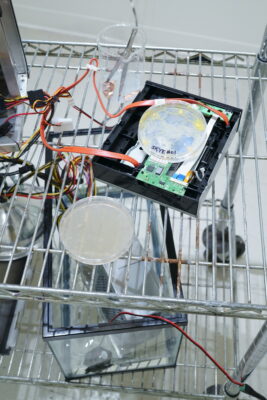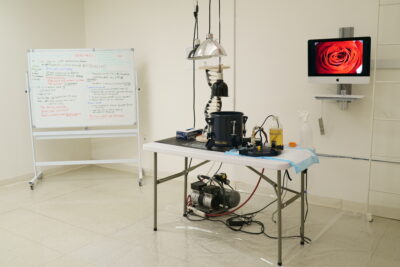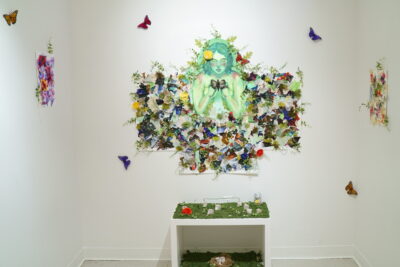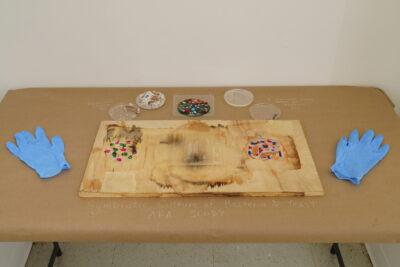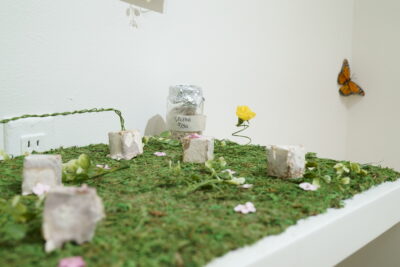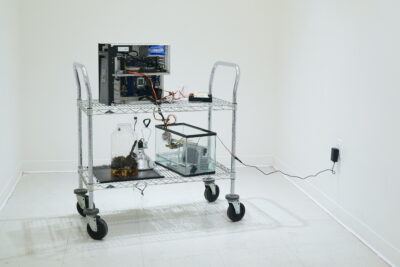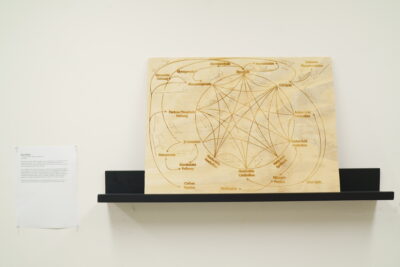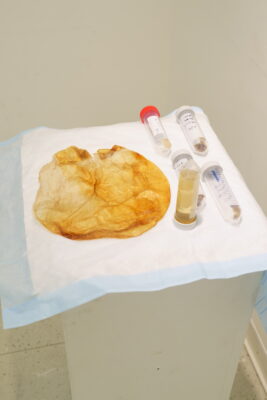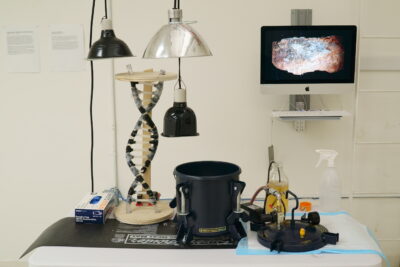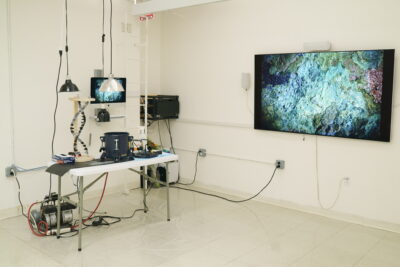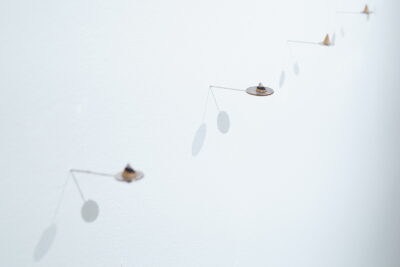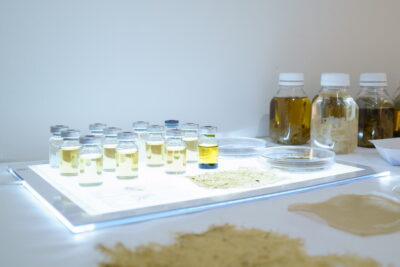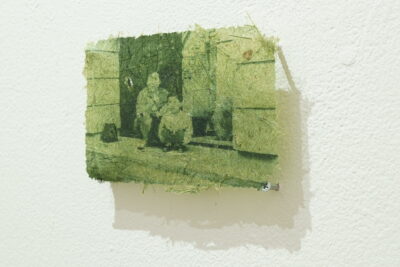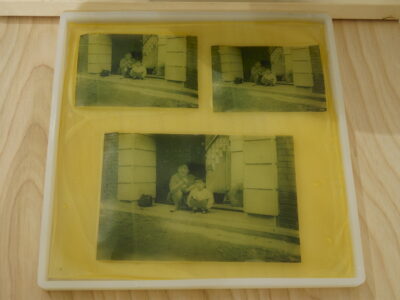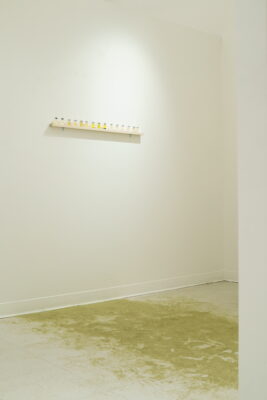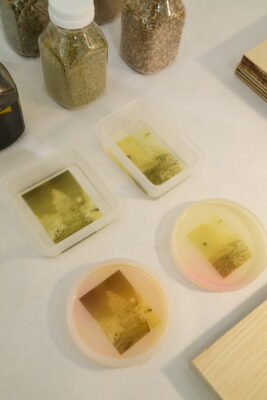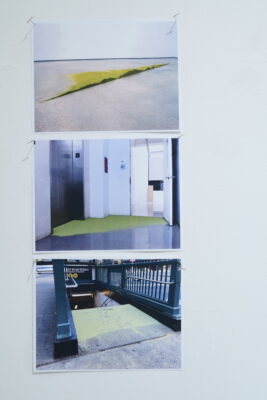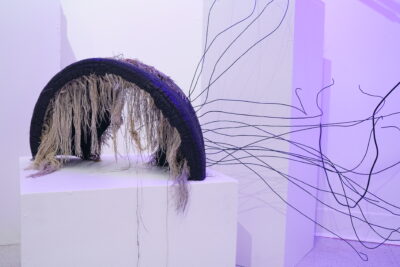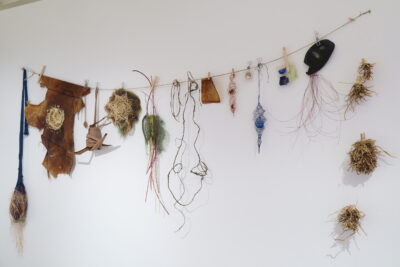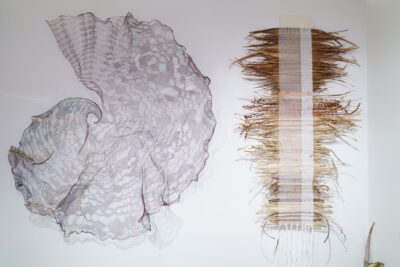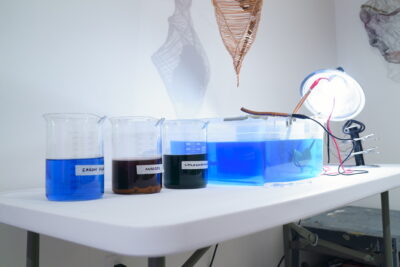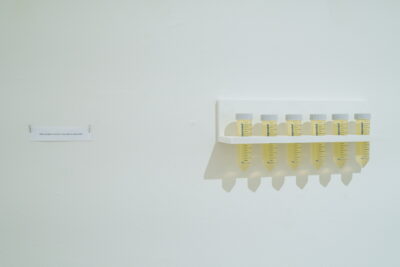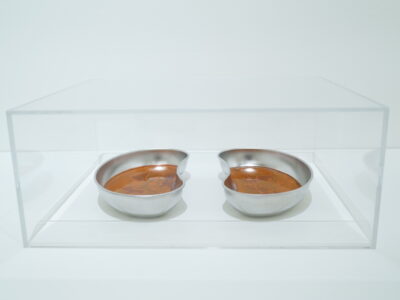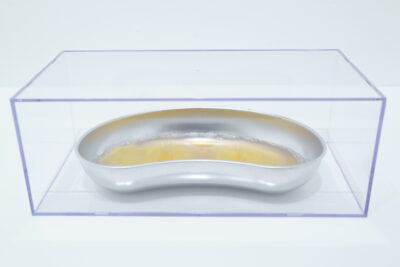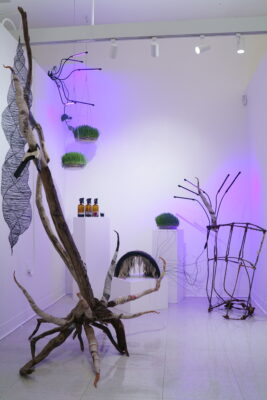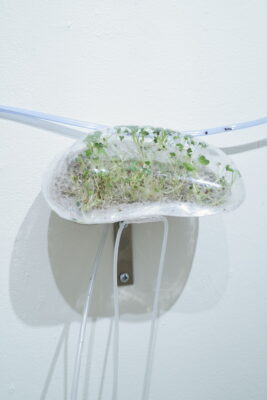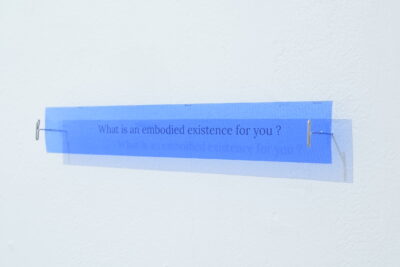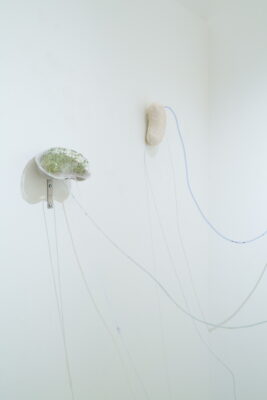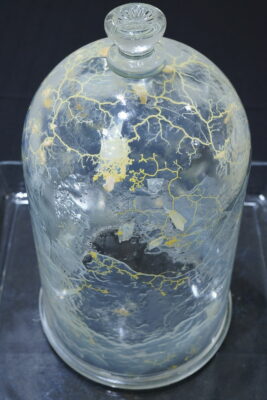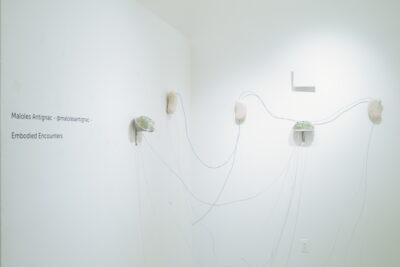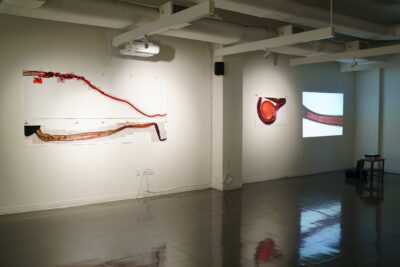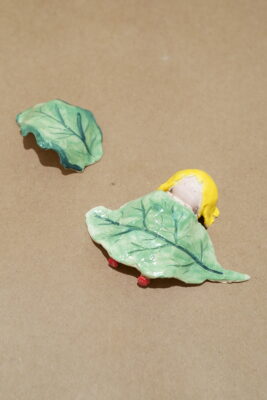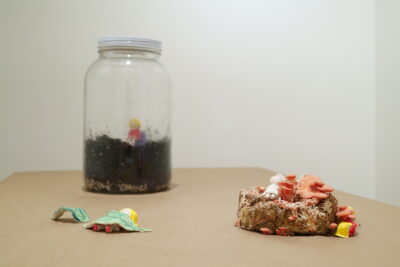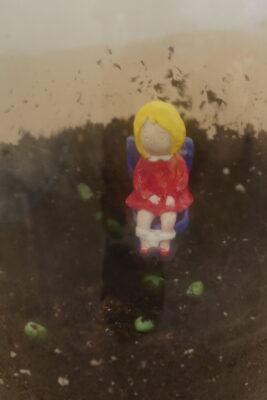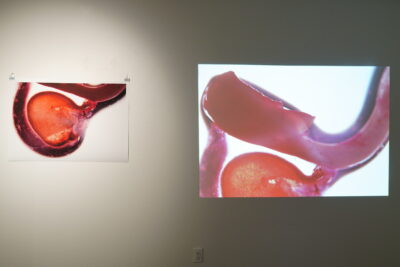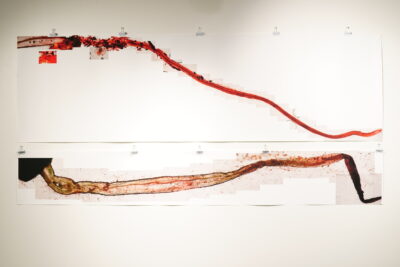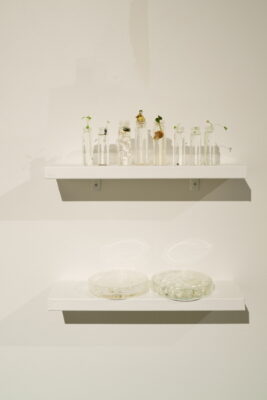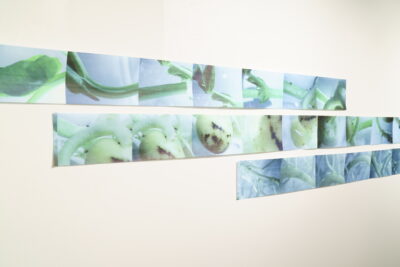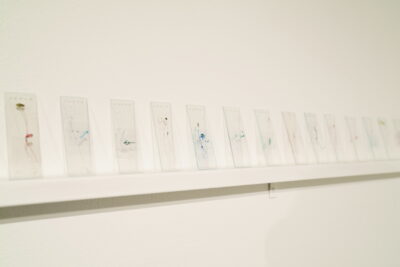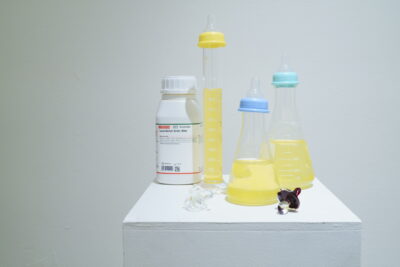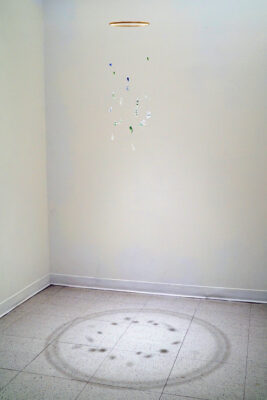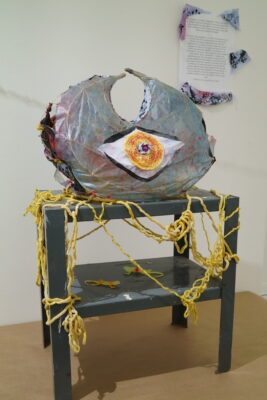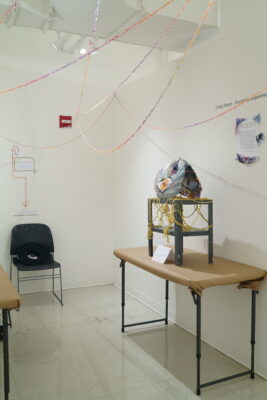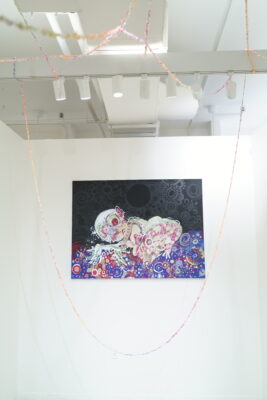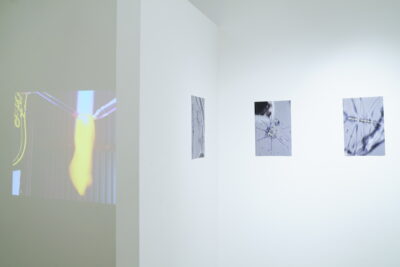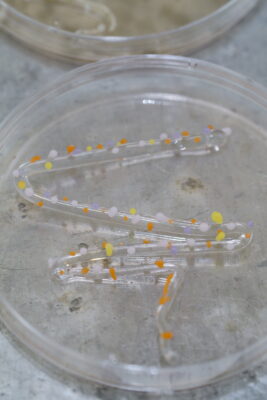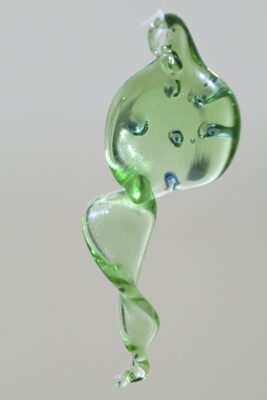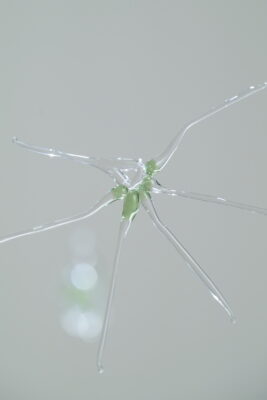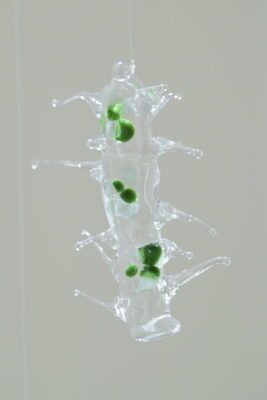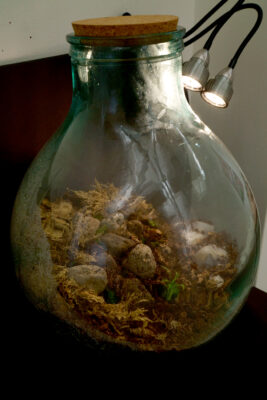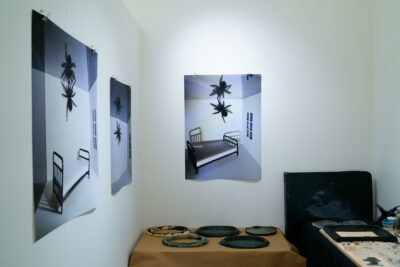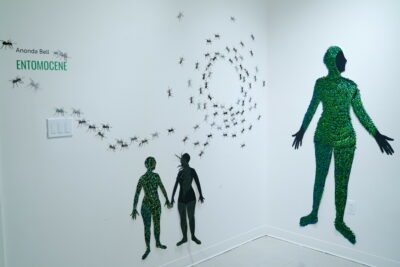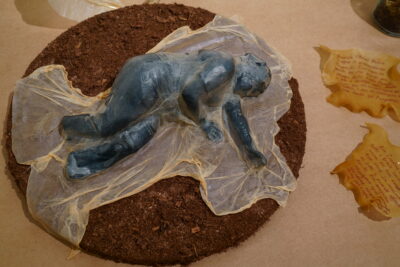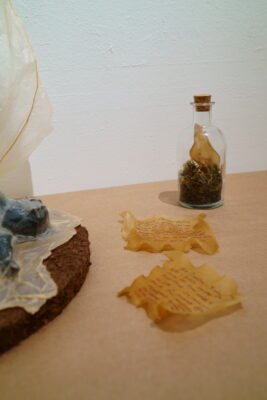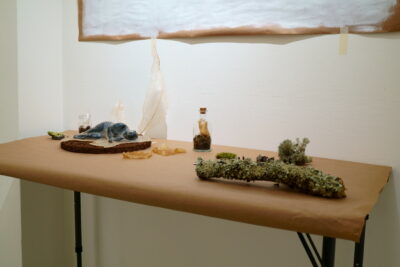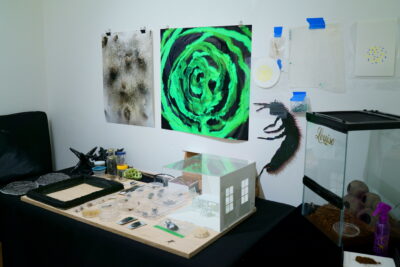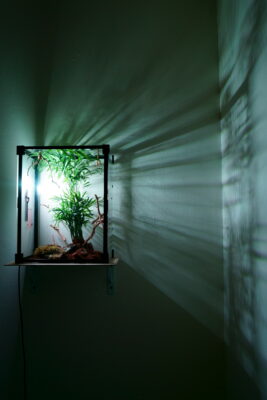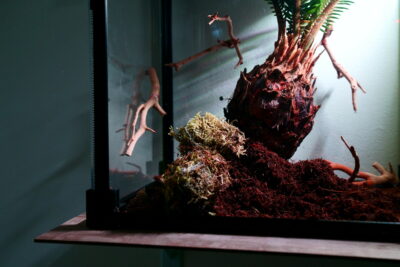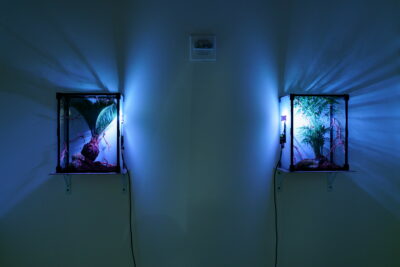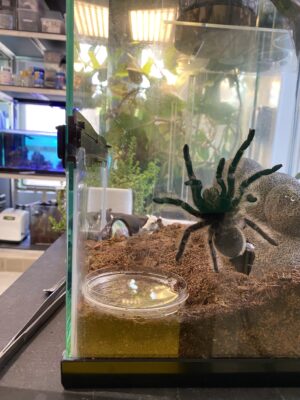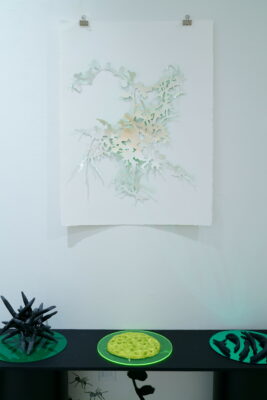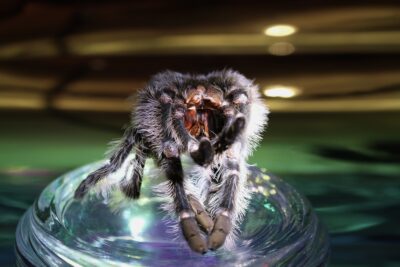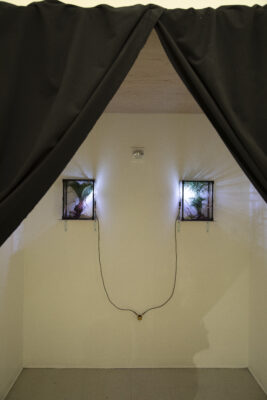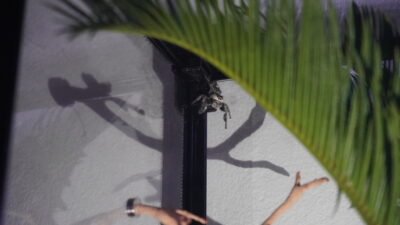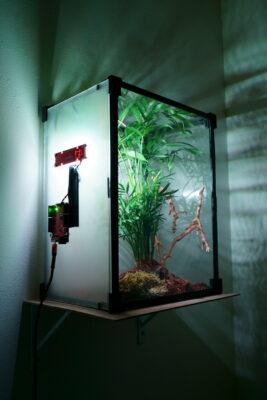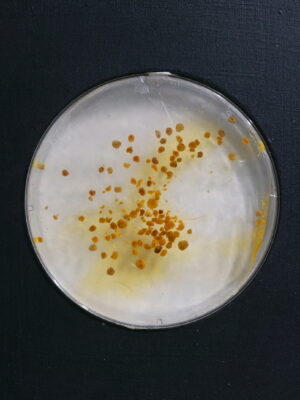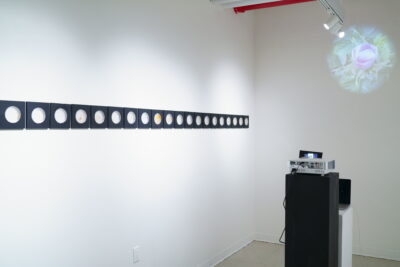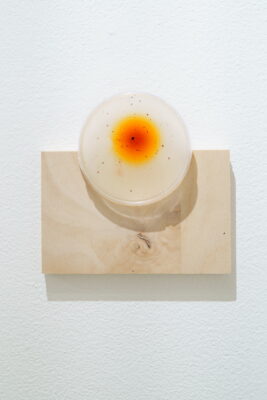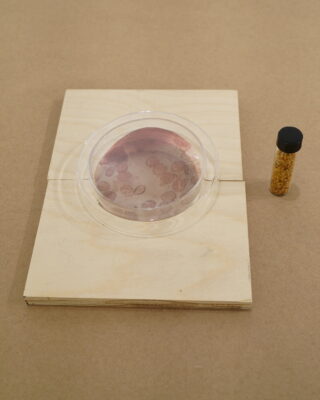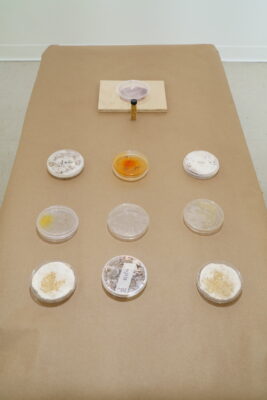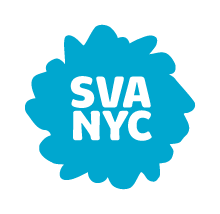Porous Kinships
Exhibition
Porous Kinships
June 14, 2023
Location:
SVA Fine Arts Building
Opening reception: Wednesday, June 14, 2023. 6-8pm
Artists
Maloles Antignac, Anonda Bell, Sebastian Garcia-Medina, Skye (Xinyi) Gao, Willow Gatewood, Trisha Gupta, Belen Jaramillo, Asad Khan, Angela Link, Emily Moon, Geraldine Ondrizek, Selena Pacheco, Beryl Rappaport, Romilly Rinck, Diana Sanchez, SublteFlux | Shae Nadine, Patrick Stochmal, Sangwoo Yoo, Koko Zhang
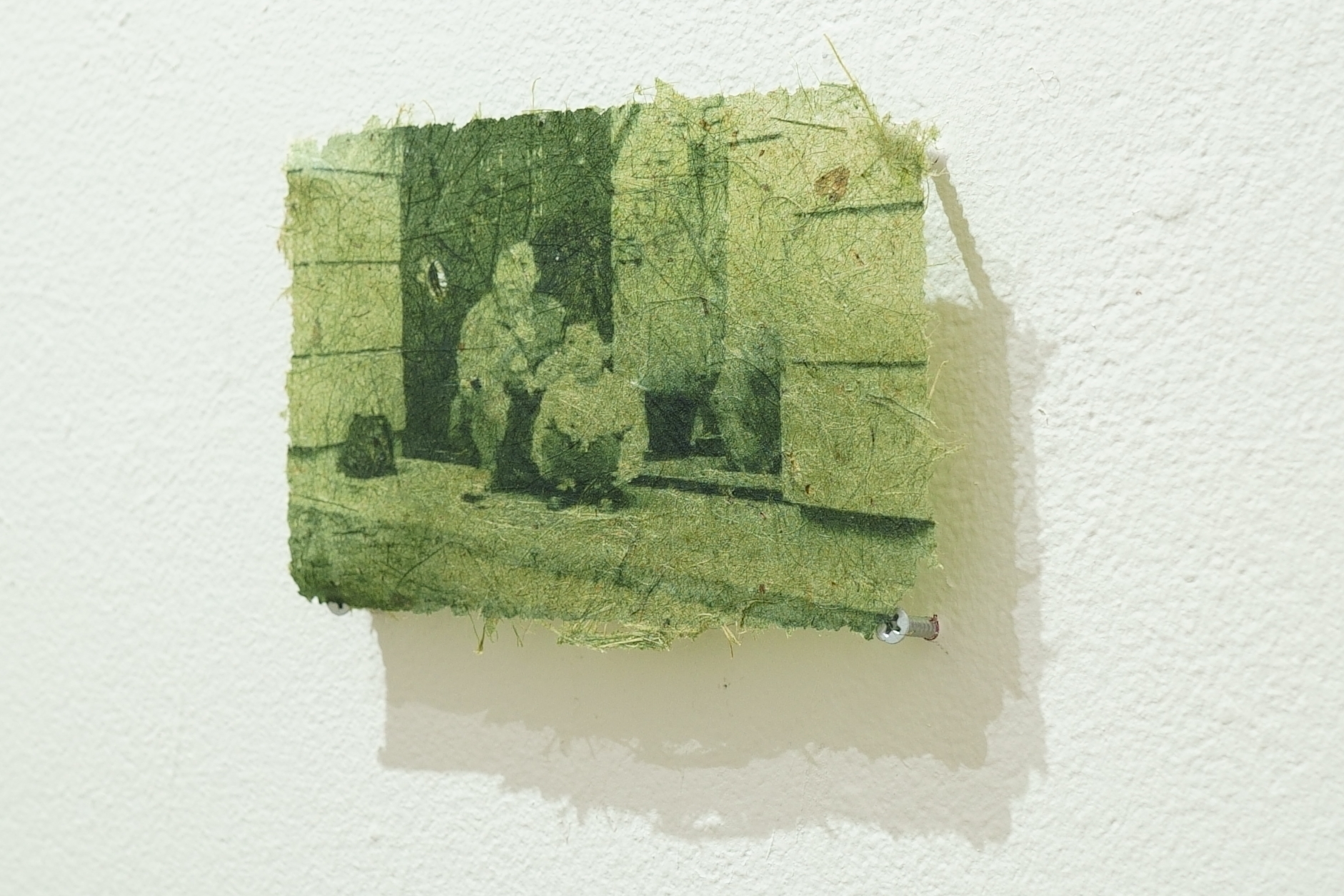
The works produced in the Bio Art Summer Residency (2023) explored such topics as ecosystems, microbes, mycelium, algae, insects, bio-plastics, environmental waste, and bio-sensors in conjunction with their philosophical components. The projects culminated in a final exhibition entitled “Porous Kinships.”
Anonda Bell (Australia/USA) creates interdisciplinary work addressing the environment and its allied fields. In this work she imagines a future world where insects are the most prevalent and powerful species on this planet. How would humans exist in these conditions, as subordinate to another species? Angela Link (USA) examines the enmeshment between our biological surroundings and cultural history, drawing from her background in anthropology. Her mixed media installation investigates what it means to participate in a life cycle built on death and decay. In an interactive installation, Willow Gatewood uses sound, images, and text to explore how our bodies are in constant communication with the surrounding world via microbes and other organisms. Through the use of biosensors, visitors collaborate with plants and fungi to generate a sonic environment. Beryl Rappaport (USA) uses glass to depict microbial forms in their beauty, threat, and nostalgia. Her installation pays tribute to gnotobiotic mice, exploring the role of microbial communities inside and outside of us. Sebastian Garcia-Medina (Colombia), as a scientist, explores biological resilience and physical interconnectedness through the interplay of metabolic networks shared among species. He experiments with bacterial manufacturing as an effort to rejoin human industrial manufacturing with ecosystemic balance. Maloles Antignac questions the deconstruction of boundaries between the natural and the artificial. She uses earth in combination with organic materials derived from scientific research to reveal how human, non-human and technology interact together. Gerri Ondrizek’s work investigates embryonic and genetic development. Using a compound microscope, she photographed germinating seeds to observe their epithelial cell tissues in embryonic development, which she recorded as being similar to human development. Patrick Stochmal (Toronto, Canada) employs queerness as a tool to explore ideas of kinship that are unbounded by enclosed, species-specific genealogies. He questions intimacy with more-than-human agents alongside an interrogation of hegemonic structures that delimit normative being and kinship. Romilly Rinck (UK) explores common themes in mythology: metamorphosis, unknown origins, and the play between dualities, creating her own mythology of materials. Distinctions between the animate and inert become blurry and porous. Xinyi Gao’s (China) work evolves around the exploration of blurring the demarcation between living and non-living entities. Ranging from electronic devices to living organisms, her work seamlessly incorporates materials and elements from both artificial and natural systems. Sang Woo Yoo (Seoul, Korea) is an artist driven by the intention to reawaken modern senses. He creates art that engages multiple senses, challenging societal numbness through material ecological cycles. He employs dead Christmas trees as his metaphor.Koko Zhang (China) consistently finds inspiration in the little moments of life and skillfully embellishes them with adorable characters within her stories. Emily Moon (USA) aims to portray the ways in which she believes intelligence is measured in prescriptive ways- specifically overlooking the insight of disabled, neurodivergent minds. She relays this experience through the use of a tactile painting, wearable masks, strewn yarn, and interactive secrets for the viewer to unearth. Asad Khan (USA) explores restoring meaningful agency to the captive animal. His design prototype allows jumping spiders to manipulate the light levels of their own environments by interacting with proximity sensors. Shae Nadine (Canada/USA) offers a meditation on the interconnectedness of all things, from the tiniest of neurons to vast expanses of nebulae. Through abstracted natural visual elements and hyper-attention to detail, the artist explores the juxtaposition of universality and intimacy, in addition to the struggle between humanity and nature. Diana Sanchez (Colombia) explores her own grief using human tears and lab-made tears to interrogate broader questions around love, death, data centers and evolution. Could we have an algorithmic grief estimating how long such emotions can last? Are our emotions bio assets to keep in data centers such as our blood and saliva? Trisha Gupta (USA) uses snakes and the medical caduceus as a symbolic metaphor to address competent and incompetent care. Her work explores human rights violations at Forest Haven Asylum that closed in the 1990s.
Artwork above: Sangwoo Yoo
Photographs by Xuemeng Zhang
